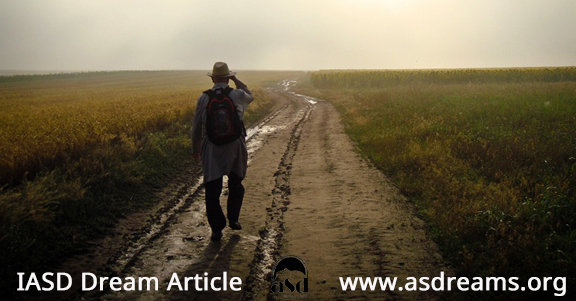 Death Dreams: Where Reality and Identity Become Fluid
Death Dreams: Where Reality and Identity Become Fluid
“If we’re aware of our dreams, especially at times of life transition, we begin to have a sense of the fluidity of reality and identity that we’ll face when we ourselves are approaching death.”
Kirsten Backstrom
What is actually going on as we die?
As a spiritual care professional and as a volunteer, I’ve been with several thousand people in the last days or weeks of their lives. I’ve also experienced life-threatening illness and death dreams personally.
As death approaches, we come face to face with threshold experiences that can be both difficult and healing. There is devastation, and also great potential. Regardless of our beliefs about the afterlife, the experience of approaching death means approaching the unknown.
Walking towards death
At an in-patient hospice where I’ve volunteered for many years, I got to know a man named Jasper who was dying of lung cancer in his seventies. He told me stories about growing up on a mid-western farm. He shared his memories of the endless acres of alfalfa fields shimmering in the wind—memories that were associated with a sense of spaciousness, but also with hard labor and long hours as he tried to follow his father’s example and expectations.
When Jasper could no longer get out of bed and was sleeping more and more of the time, he began to share dreams. In a hoarse whisper, he told me:
I’m walking across an open field. Just walking and walking. Trying to get to my dad. He’s at the far side of the field, standing by a fence. He’s expecting me. I walk and walk but can’t get any closer. Don’t want to disappoint him, but I’m too slow, can’t keep up. The tall grass is dragging on my legs, slowing me down. But I have to keep walking. The sun is setting.
Jasper was anxious and exhausted, but committed to completing the task of his life. He’d always worked hard, and he wasn’t going to give up now. So he struggled and labored through the process of dying. Towards the end, he was in a coma, unresponsive to those around him, but with his eyes partly open, and his lips moving as if talking to himself, urging himself on.
As I sat beside his bed, hour after hour, I noticed that his feet were moving under the thin sheet: first one foot flexed and then the other. Actually, his legs were working, too—alternately tensing and relaxing. He was walking. I imagined him walking across that field, to meet his father. It was a long way, and it took a long time. He worked hard at walking, and worked hard for each breath, the whole way.
I wasn’t there when he died, but his son told me that he walked right up until he stopped breathing—then let go with a big sigh, as if he’d finally gotten where he was going.
Where dreams and reality become one
As death approaches, the distinctions between waking, dreaming, and deep sleep can break down completely. It becomes impossible (from the outside, and probably from the inside, too) to tell what’s a vision, what’s a dream, what’s “real.”
Jasper seemed to experience the same “dream”—a dream of walking across fields—as a waking memory, a vision, a sleeping dream, and a phenomenon in deep sleep. While recounting memories, he was often half asleep. While recounting dreams, he wasn’t always sure whether they were dreams or not. And when he was in a coma, he may have been dreaming, or he may have been beyond dreams, but his body was moving in a way that communicated to others in the waking world that something was happening.
When we are dying, or when we are going through times of intense life transitions, our sense of identity and reality, like the distinction between waking and sleeping, begins to fall apart as we lose many of the things that had defined us. Although it is often a struggle, the identity can become more flexible, even fluid, as if in a dream. And when the identity is fluid, the reality experienced by that identity is also fluid. Possibilities open up.
Who knows what might happen next?
A longer version of this article appears in the Winter 2015 edition of IASD’s magazine, DreamTime.
